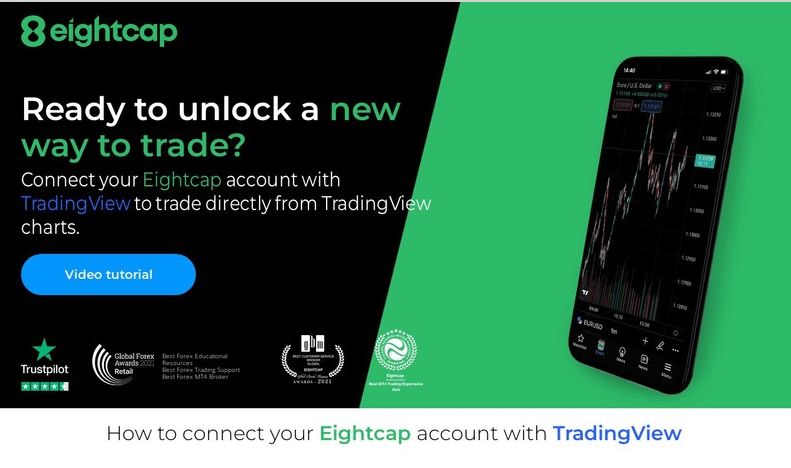Forex trading is a complex and dynamic field that requires traders to have a solid understanding of supply and demand. Understanding these two concepts and how they interact with each other can make the difference between a winning trade and a losing one.
We will discuss what supply and demand mean in economic theory in the context of forex, how to identify supply and demand zones, and how to use this information to make informed trading decisions.
Whether you are new to forex or a seasoned trader, this guide will provide invaluable insights that can help you take your trading to the next level.
So let’s dive in and discover the art of mastering supply and demand in forex trading.
Factors that Affect the Supply and Demand in Forex
There are various factors that can impact the supply and demand in forex trading. In this section, we will discuss some of the most important ones.
Political Stability
Political instability in a country can have a significant impact on its currency. A nation that is politically stable is more likely to attract foreign investment, which can increase the demand for its currency.
On the contrary, political unrest or uncertainty can deter investors and cause a decrease in demand for the country’s currency.
For example, during the 2020 US presidential election, the USD experienced significant fluctuations due to the uncertainty surrounding the outcome.
Economic Stability
Economic factors such as GDP growth, employment rates, and trade balances can also play a crucial role in determining the supply and demand in forex. Strong economic performance can boost a currency’s demand, while a weak economy can lead to more supply demand a drop in demand.
For instance, the Japanese yen (JPY) rose sharply during the 2008 global economic crisis due to its reputation as a safe haven currency.
Interest Rates
Interest rates set by central banks can impact the supply and demand for a currency. When interest rates are high, it incentivizes investors to hold that currency, leading to an increase in its demand. Conversely, when interest rates are low, it can result in lower demand zones supply for a currency.
For example, the USD experienced a rise in demand in 2018 after the Federal Reserve raised interest rates.
Inflation
Inflation is another critical factor that affects forex supply and demand. When inflation is high, the value of a currency tends to depreciate as consumers need to pay more for goods and services. However, low inflation can increase the demand draw supply for a currency as it indicates a stable economy.
For instance, the Swiss franc (CHF) is considered a safe-haven currency due to Switzerland’s reputation for having low inflation.
Global Events
Finally, global events such as natural disasters, geopolitical tensions, and pandemics can have a significant impact on forex supply and demand.
For example, the COVID-19 pandemic led to a decrease in demand for emerging market currencies due to market prices and the uncertainty surrounding their economies.
Economic Indicators in Supply and Demand of Forex
Economic indicators are vital tools for forex traders to determine the supply and demand of currencies. They provide valuable insights into a country’s economic health, which can influence forex trading decisions.
In this section, we will discuss five essential economic indicators and their impact on supply and demand in forex trading.
Gross Domestic Product (GDP)
GDP is a measure of a country’s economic output and is considered one of the most critical economic indicators. An increase in GDP usually results in a higher demand for a currency, as it signals economic growth and a healthy economy. On the other hand, a decrease in GDP can lead to a lower demand for a currency.
For example, during the COVID-19 pandemic, many countries experienced a significant drop in GDP, leading to a decrease in demand for their currencies.
Consumer Price Index (CPI)
CPI is a measure of inflation and is used to track changes in the cost of goods and services over time. High inflation can lead to a decrease in demand for a currency, as consumers will need to pay more for goods and services. Conversely, low inflation can increase the demand for a currency, as it indicates a stable economy.
For instance, the Australian dollar (AUD) experienced a rise in demand when the country’s inflation rate decreased in 2020.
Interest Rates
Interest rates set by central banks can have a significant impact on supply and demand in forex trading. When interest rates are high, investors are more likely to hold onto a currency, leading to an increase in its demand. Conversely, when interest rates are low, it can result in lower demand for a currency.
For example, the Euro (EUR) experienced a decline in demand when the European Central Bank lowered interest rates in 2019.
Balance of Trade
The balance of trade measures the difference between a country’s exports and imports. A positive balance of trade can increase demand for a currency, as it indicates a strong economy with a surplus of goods to export.
On the other hand, a negative balance of trade can lead to lower demand for a currency. For instance, the Canadian dollar (CAD) experienced a rise in demand when Canada’s exports increased in 2020.
Political Stability
Political stability can also impact supply and demand in forex trading. A country that is politically stable is more likely to attract foreign investment, leading to an increase in demand for its currency. Conversely, political unrest or uncertainty can deter investors and cause a decrease in demand for the country’s currency.
For example, the British pound (GBP) experienced a significant drop in demand during the Brexit negotiations due to political uncertainty.
Steps Involved in Trading Breakouts Based on Supply and Demand Levels
The trading breakout strategy based on supply and demand levels can be a profitable trading strategy, for forex traders. In this section, we will discuss the steps involved in trading breakouts based on supply and demand levels.
Identify Key Levels Of Support And Resistance
The first step in trading breakouts is to identify key levels of support and resistance. These levels are significant because they indicate where supply and demand are concentrated.
Traders can use technical analysis tools such as trend lines, moving averages, and Bollinger bands to identify these levels.
Wait For A Breakout
Once the key levels of support and resistance have been identified, traders should wait for a breakout to occur. A breakout happens when the price breaks through a significant level of support or resistance. This indicates that there is a shift in supply and demand and presents an opportunity for a profitable trade.
Confirm The Breakout
Before entering a trade, traders should confirm that the breakout is valid and not a false signal. They can do this by analysing volume, candlestick patterns, and other technical indicators. Confirmation can help to avoid entering a trade that may result in losses.
Enter The Trade
After confirming the breakout, traders can enter a trade. For a bullish breakout, traders can enter a long position, while for a bearish breakout, they can enter a short position. It’s important to set clear entry and exit points before entering the trade to manage risk.
Manage Risk
Managing risk is crucial when trading breakouts. Traders should set stop-loss orders to limit potential losses if the trade does not go as planned. They should also consider setting profit targets to ensure they don’t miss out on potential profits.
For example, suppose a trader identifies a resistance level at $1.20 for the EUR/USD currency pair. They wait for a breakout and confirm it with a surge in volume and a bullish candlestick pattern. The trader can then enter a long position with a stop-loss order at $1.18 and a profit target at $1.25.
Managing Risk in Forex Trading Using Supply and Demand Levels
Managing risk is essential in forex trading, as trades involve significant capital. When combining supply and demand levels with risk management strategies, traders can increase their chances of making profits in the forex market.
Here are some ways to manage risk in forex trading using supply and demand levels:
Set Stop-Loss Orders
One of the most common risk management strategies is setting stop-loss orders. A stop-loss order is an instruction that tells the trading platform to automatically close a position if the price reaches a predetermined level.
A stop-loss order can be placed below or above the supply or demand level depending on the trade direction.
For instance, if a trader identifies a support level of $1.30, they can place a stop-loss order at $1.28, meaning that the position will be closed if the price falls below that level.
Use Trailing Stop-Loss Orders
Trailing stop-loss orders are similar to regular stop-loss orders, but instead of a fixed level, it moves with the trade’s favourable direction.
A trailing stop-loss order can be placed at a specific number of pips below or above the current price. It can be particularly useful when there is a sudden price movement in the trader’s favour, allowing them to lock in profits while still limiting potential losses.
Identify Multiple Levels Of Support And Resistance
Identifying multiple levels of support and or resistance levels can help traders limit their risk. By having several levels of support or resistance identified, traders can set stop-loss orders at different levels, reducing the risk of significant losses if a single level is broken.
For instance, if a trader identifies a resistance level at $1.35, they can place a stop-loss order at $1.36 and another at $1.37.
Avoid High-Risk Trades
Avoiding high-risk trades is another risk management strategy that traders should consider. Certain trades might have a higher probability of failure due to market conditions, news events, or other factors.
When trading based on supply and demand levels, traders can avoid high-risk trades by waiting for confirmation and analysing other technical indicators.
Use Proper Position Sizing
Proper position sizing is essential when managing risk in forex trading. Traders should only risk a small percentage of their account balance on each trade. The right position size can be calculated based on the stop-loss level and the trader’s risk-tolerance level.
For instance, if a trader decides to risk 1% of their account balance on a trade with a stop-loss at $1.20, they should calculate the position size so that the potential loss will be no more than 1%.
Key Steps to Develop A Trading Plan Based on Supply and Demand
Developing a demand trading strategy or plan based on supply and demand is crucial to achieving success in the forex market. A solid trading plan can help traders identify opportunities, manage risks, and make informed decisions.
Here are the key steps involved in developing a trading plan based on supply and demand:
Identify Key Supply And Demand Levels
The first step is to identify key supply and demand levels in the market. These support and resistance levels can be identified using technical analysis tools such as trend lines, moving averages, and Bollinger bands. By identifying these levels, traders can determine potential entry and exit points for their trades.
Determine The Market Trend
Once the key supply and demand levels have been identified, traders should determine the market action or trend. This can be done by analysing the price action and technical indicators.
Understanding the trend can help traders determine the direction of their trades and set appropriate entry and exit rules.
Set Entry And Exit Rules
Traders should set clear entry and exit rules based on the identified supply and demand levels and the market trend. Entry rules determine when traders should enter a trade, while exit rules determine when they should exit the trade. These rules should be based on technical analysis and should consider risk management strategies.
Develop Risk Management Strategies
Risk management is an essential component of any trading plan. Traders should develop risk management strategies that consider stop-loss orders, position sizing, and leverage. By doing so, traders can limit their potential losses and protect their capital in volatile financial markets indeed.
Monitor And Adjust The Plan
A trading plan should be continuously monitored and adjusted to reflect changes in the market. Traders should keep track of their trades and performance, identify areas for improvement, and adjust their plan accordingly. This requires discipline and patience, but it can help traders improve their results over time.
Backtest The Plan
Backtesting involves applying a trading plan to historical market data to see how it would have performed in the past. This can help traders identify potential flaws in the plan and adjust it before risking real capital. Backtesting can be done using software or manually by reviewing historical price charts.
For example, a trader identifies a key supply level at $1.35 and a demand level at $1.30 for the EUR/USD currency pair. They determine that the market trend is bullish and set entry rules to enter long positions when the price breaks above $1.35 and exit rules to exit the trade if the price falls below $1.30.
They also implement risk management strategies such as setting stop-loss orders and position sizing based on their account balance range trading, and risk tolerance.
Frequently Asked Questions (FAQs)
What is supply and demand in forex trading?
As a forex trader, you should understand that supply and demand is a fundamental concept that applies to forex trading. In forex trading, supply refers to the amount of currency that traders are willing to sell at a particular price level, while demand refers to the amount of currency that traders are willing to buy at a particular price level.
By understanding supply and demand levels, you can gain valuable insights into potential price movements and market trends.
How can I identify supply and demand zones in the market?
To identify supply and demand zones in the market, you can use technical analysis tools such as trend lines, moving averages, and Bollinger bands. These tools can help you identify key price levels that have served as areas of both support and resistance lines or resistance in the past.
Additionally, you can look for price gaps, where there is a significant difference between the opening and closing prices of consecutive candles.
How do I trade a supply and demand zone?
To trade a supply or demand zone, you should wait for the price to approach the level and then look for signs of a potential breakout or reversal. For example, if the price approaches a supply zone, you might look for bearish candlestick patterns or other technical indicators that suggest a potential price reversal.
If the price breaks above the supply or demand zone forms however, you might look for bullish opportunities.
What are the dangers of trading supply and demand zones?
While trading supply zones and demand zones can be a profitable strategy, it also carries risks. One danger is that you might misidentify a zone, leading to losses. Another risk is that price movements can be volatile around supply and demand zones, which can lead to whipsaws and false breakouts.
Additionally, you may not be able to exit your positions quickly enough if the price suddenly moves against you.
What are some advanced supply and demand trading strategies?
Advanced supply and demand trading strategies include using multiple timeframes to analyse supply and demand levels, using volume analysis to confirm price movements around demand and supply zones, and combining supply and demand analysis with other technical indicators such as RSI or MACD.
You may also use more complex chart patterns such as head and shoulders to identify supply and demand zones and potential price movements. By applying these advanced strategies, you can gain a deeper understanding of supply and demand in forex trading and make more informed trading decisions.
Conclusion
If you want to achieve success in forex trading, mastering the art of supply and demand is an essential skill that you need to develop. Understanding supply and demand can provide you with valuable insights into the market and help you make informed decisions about potential entry and exit points, market trends, and more.
To start, you should learn how to identify supply and demand levels using technical analysis tools such as trend lines, moving averages, and Bollinger bands. Once you have identified these levels, you can use them to trade breakouts and develop a solid trading plan based on market trends.
Risk management is also an essential aspect of forex trading, and you should consider setting stop-loss orders, position sizing, and leverage to limit your potential losses and protect your capital.
Remember that mastering the art of supply and demand in forex trading requires discipline, patience, and a willingness to learn. You should continuously monitor and adjust your trading plan based on changes in the market, keep track of your trades and performance, and identify areas for improvement.
With the right mindset and strategies, you can navigate the complexities of the forex market and capitalize on opportunities presented by supply and demand levels.
By using smart money, developing a solid understanding of supply and demand and continuously improving your trading plan, you can achieve long-term success in forex trading.
Disclaimer:
All information has been prepared by TraderFactor or partners. The information does not contain a record of TraderFactor or partner’s prices or an offer of or solicitation for a transaction in any financial instrument. No representation or warranty is given as to the accuracy or completeness of this information. Any material provided does not have regard to the specific investment objective and financial situation of any person who may read it. Past performance is not a reliable indicator of future performance.
FOLLOW US

.png)






